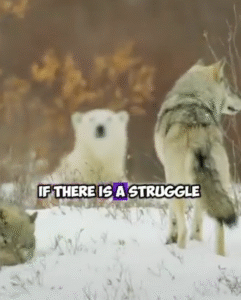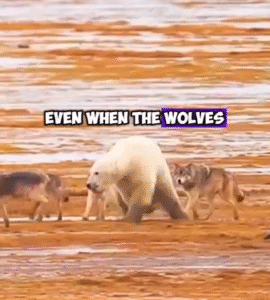
The Centuries-Long Rivalry Between Polar Bears and Wolves
In the icy, windswept expanses of the Arctic, two apex predators have shared the land for centuries: the polar bear and the wolf. Though they lead vastly different lifestyles—one solitary and powerful, the other social and strategic—their overlapping territories and competing needs have led to a long, uneasy rivalry shaped by survival, scarcity, and raw instinct.
Polar bears (Ursus maritimus) are the undisputed giants of the North. Built for the cold, they roam sea ice and coastal areas hunting seals, which they catch by waiting patiently at breathing holes. Weighing up to 1,500 pounds, polar bears rely on stealth and brute strength to catch their prey. Wolves (Canis lupus), on the other hand, rely on endurance, cooperation, and speed. Hunting in packs, they target caribou, muskoxen, and smaller mammals, using group tactics and coordinated ambushes to bring down prey much larger than themselves.
While polar bears and wolves rarely hunt the same prey directly, they do occasionally clash—especially during lean seasons when food is scarce. In Arctic regions where their territories overlap, wolves have been known to scavenge from polar bear kills, and polar bears have occasionally raided wolf dens or taken down weakened members of a pack. These confrontations are not daily occurrences, but they reflect the harsh competition for limited resources in one of the planet’s most unforgiving environments.
One of the main sources of conflict arises when polar bears come inland, particularly during the summer months when sea ice melts. With their usual seal-hunting grounds unavailable, bears may venture into tundra regions where wolves dominate. These land incursions can lead to tense encounters. A hungry bear might approach a wolf kill to steal it, especially if it senses the pack is outnumbered or weakened. In response, wolves may harass, bite, and distract a bear to drive it away—a dangerous gamble that only works with strength in numbers and a bit of luck.
Despite their differences, polar bears and wolves are both highly intelligent, adaptable animals, and their rivalry is less about open battle and more about strategic avoidance and opportunism. Wolves respect the bear’s power and rarely engage directly unless provoked or desperate. Bears, while capable of immense destruction, often prefer to conserve energy and avoid pack confrontations unless absolutely necessary.
Climate change has begun to reshape this ancient rivalry. As sea ice continues to retreat and polar bears spend more time inland, interactions with wolves are increasing. This shift is creating new dynamics—polar bears may now compete more directly with wolves for food, and both species are being pushed to adapt in ways never before seen. Some scientists are studying whether this could lead to more aggressive encounters, new hunting behaviors, or even temporary coexistence driven by mutual need.
In the grand theater of the Arctic, the rivalry between polar bears and wolves is a symbol of the balance between power and strategy, solitude and cooperation. It’s a centuries-long contest shaped by ice, instinct, and survival—a quiet but fierce battle playing out in the frozen silence of the North.
